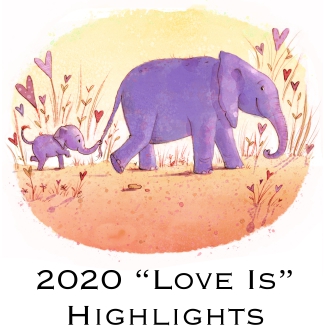

My Changes:
Because many masterpieces during this time period had dark, warm, and similar color palettes I wanted to push the boundaries a bit. I opted to keep the prince’s attire its original color but complimented it with blues and greens around him. I also added in modern patterns to give it a makeover. If you look closely between my version and the original, you’ll also notice that I darkened and warmed up Prince Felipe’s skin a touch (to give a little more contrast between that and his pinafore), widened his face to feel more toddler-ish, enlarged the dog’s head, cropped it, and completely disregarded the background. (Though I was intrigued by what lay beyond this room, I couldn’t see enough to do it justice.) There were a few moments of panic while experimenting that I wasn’t sure it would work, but I am quite happy with the end result. (Copying each aspect of the original can often be easier because there’s less guesswork!)
Things I thought/Questions I asked:
There are a few artist repeats in my MousterWorks series, and this is one of them. Although Las Meninas was my favorite childhood painting, I also enjoyed this one. I think it resonated with me because it was a chance to see a real person—little, like me—who lived hundreds of years earlier than me. Even though this is a portrait, I feel that Velasquez was successful in adding in narrative through the inclusion of little details: the child-sized chair, the friendly dog, and the ornaments hanging like what I thought were toys on Prince Felipe’s clothing. It made me wonder what kind of toys children played with at this time. I later learned that these ornaments weren’t toys after all, but charms to ward off harm. Sadly, Prince Felipe struggled with health challenges throughout his life and died when he was only four.
In addition to these details, I love how Velasquez reveals Prince Felipe’s soul. I melted as I looked closely at the little right hand resting on the chair, tenderly emphasizing how small and young (and weak) this heir to the throne is. Not sure I captured it quite like Velasquez—I had to make the hands bigger so they wouldn’t look like claws—but I tried! His eyes also say so much, though I’m sure this 3-year-old wasn’t all that thrilled to stand for hours to have his portrait taken. I also fell in love with the dog. (Those eyes!) It made me glad that this sickly prince had a cute friend. After learning about his sad, short life it made sense why Velasquez made the color choices that I opted to change. And what choices would he have made had Prince Felipe been well? It made me glad I got to change history just a bit and give this poor soul a second life!
What I noticed or learned from Velasquez’s techniques:
As mentioned last week, it is clear that Velasquez saw people intuitively. Although he was a master of paint, value, anatomy, and likeness what I most appreciate is how he used these skills to reveal the soul and story of whomever he painted.

When I was little, Mom and I often looked through a beautiful book of Masterpieces. I asked lots of questions about these people painted in time: How were we the same? How were we different? If you are also a fan of masterpieces, children’s book art, and searching for mice, I invite you to follow along!
All original images © Angela C. Hawkins


Love a MousterWork print? They will be available in my Etsy shop. Don’t see the one you want? Email me and I’ll add it in.